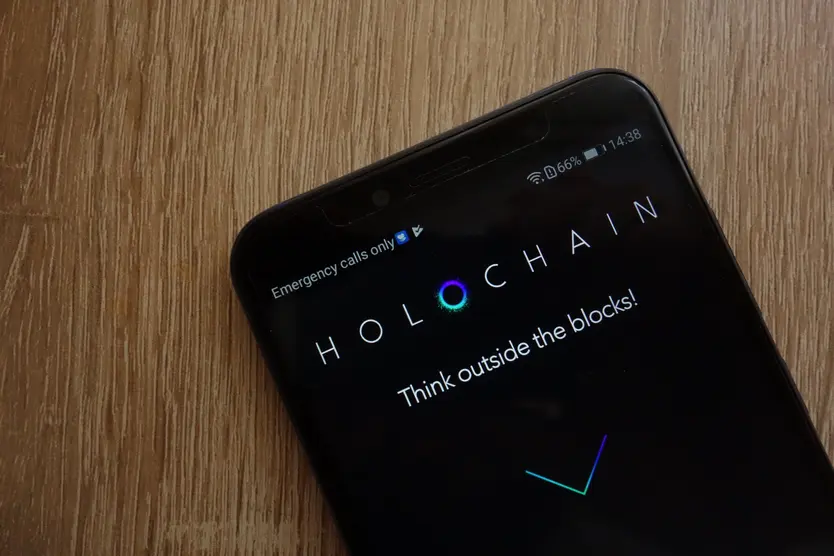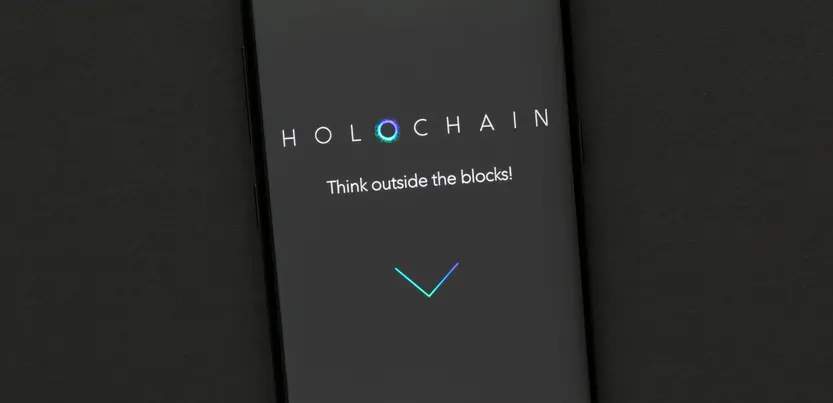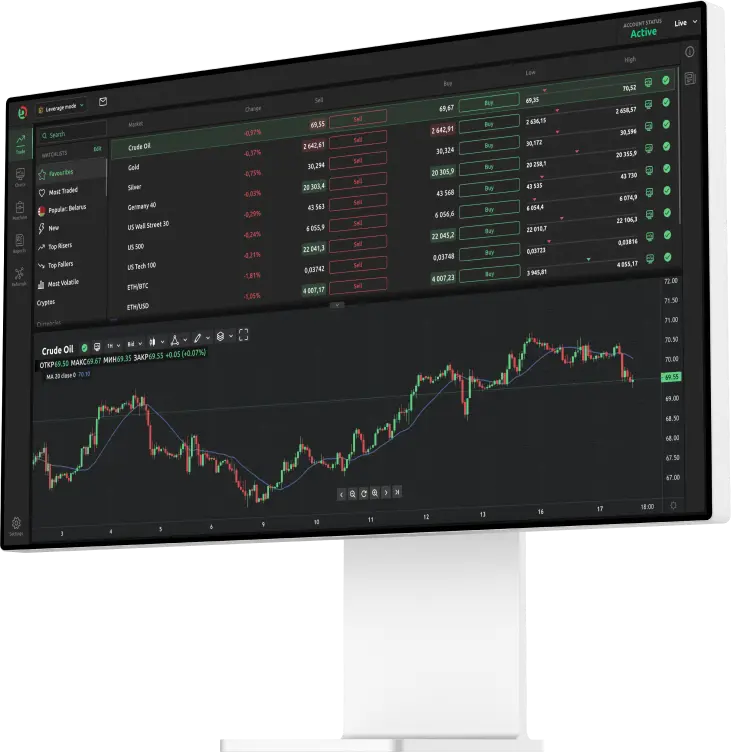Holochain price predictions saw a dramatic surge last year – can it unseat blockchain?

In this forecast
- Holochain explained
- Peer-to-peer networking
- Use cases for Holochain
- Holochain price predictions
- FAQs
Holochain price predictions had been all the rage in 2021 – with some crypto enthusiasts expressing breathless enthusiasm for a platform that’s designed to serve as an alternative to blockchain. So, what’s next for Holochain in 2022?
So what is Holochain? Has it got the potential to give major networks such as Bitcoin and Ethereum a run for their money? And could it solve the problems that established blockchains have been facing – not to mention a number of internet platforms?
Holochain explained
Right now, blockchains such as Ethereum are buckling under the strain of congestion – overwhelmed by the volume of transactions sparked by the rise of decentralised finance (DeFi), non-fungible tokens (NFTs) and bull markets over the course of 2021.
Bottlenecks are forming because the Ethereum blockchain is only built to process 15 transactions per second. That’s nowhere near enough, considering this network handled transfers worth $1.5trn (£1.1trn) in the first three months of 2021.
There’s great interest in a Holochain price prediction because there’s a belief that this platform could perform much faster than many rivals that operate on blockchain technology.
Peer-to-peer networking
Holochain also relies on peer-to-peer networking but developers say it has unlimited capacity when it comes to scalability. Contrast that with Ethereum, which is currently undergoing a painstaking multi-year upgrade to ramp up its throughput.
Like blockchains, applications can be run on Holochain – but crucially, it’s claimed that this doesn’t have any impact on network performance.
The emphasis here is on how Holochain champions distributed rather than decentralised computing. Apps on this platform don’t need a token to operate – and all of this eliminates the need for mining. Those concerned about the energy consumption and environmental impact of Proof-of-Work mechanisms may have something to celebrate here.
Use cases for Holochain
Just some of the use cases that have been put forward for Holochain include social networks, community-owned iterations of sharing economy services such as Uber and Airbnb, and supply chains.
As the project explained in an April 2018 blog post:
“Other approaches to running dApps (such as blockchain) attempt to synchronise a single universal state across all participating computers at the same time. This ‘consensus’ does not scale, and is so inefficient to run, they build in a currency to pay people to run it. Holochain is millions of times more efficient – you won’t have to waste 0.5% of the planet’s electricity to achieve a mere handful of transactions per second.”

Holochain price predictions
Two other advantages that feed into Holochain price predictions for 2022 are linked to how apps built on this network can be tailored towards everyday internet users – meaning this infrastructure can end up benefitting those who lack technical knowledge and confidence.
What’s more, ‘rapid application development tools’ mean these apps are able to hit the market quickly, eliminating the cost and bumps in the road that can exist with blockchain.
All of this isn’t to say that Holochain doesn’t have a native cryptocurrency – it does, and it’s known as HOT. The point we’re driving at here is that the use of tokens is optional.
So… how can a HOT coin price prediction cause such a frenzy?
Holochain price predictions came into sharp focus in early April, when the token’s value surged dramatically. HOT had begun the year at $0.000592 but subsequently raced to $0.03157 in a little under four months. To put that into context, this capped off gains of 5,232%.
At the time of writing on 14 January, HOT is trading at roughly $0.0061. Meanwhile, some HOT coin price predictions are forecasting that the project’s best days lie ahead. Right now, the project has a market cap of $2bn, and there are 173 billion HOT in circulation.
Part of the driving force behind its previous spikes may have been the revelation that the company behind Holochain was granted a US patent for the networking innovations it has developed. The open-source project said that this was a defensive move and the team fully intended “to share it openly within the context of the Holochain framework”.
Announcing the news, the project said:
“The patent focuses on the methods for saving, storing and retrieving data in a multi-node computing system where no single node has a comprehensive index of nodes or content managed by those nodes.”
So how outlandish is the average HOT coin price prediction that’s doing the rounds? And what about the Holochain price prediction for 2022, the forecast for the rest of the year?
FAQs
A forecast from Coinpedia has a HOT coin price prediction for 2022 that suggests we could see HOT reach potential highs of $0.048 and potential lows of $0.009 over the course of the year. Coinpedia analysts also say that the coin could trade over the course of 2023 at highs of $0.086 and lows of $0.03. Meanwhile, Coinpedia puts its Holochain price prediction 2025 between $0.1 and $0.5.
A HOT coin prediction from DigitalCoin expects the price to be $0.0078 in February 2022, $0.0088 in January 2023, $0.0118 in January 2025, and eventually $0.0250 in December 2028.
Wallet Investor sees highs of $0.0152 in November 2022, with a one-year forecast of $0.0146 and a five-year target of $0.0481.
Longer-term, a forecast for a Holochain price prediction for 2030 can be found from PricePrediction.net, with an average for the year of $0.16.
It’s important to do your own research to assess whether you believe Holochain has the potential to take on established blockchain platforms and wrestle away market share.
This project has been around for the best part of three years now, and the current multibillion-dollar market cap does help lend it some credibility. However, this is an industry that’s plagued with uncertainty and valuations could fall if a bear market seeps in next year.
Do your own research and always remember your decision to trade depends on your attitude to risk, your expertise in this market, the spread of your investment portfolio and how comfortable you feel about losing money.
Holochain describes itself as “a framework for creating and powering distributed applications, incorporating peer-to-peer content distribution protocol, cryptography, and hash tables”.
Meanwhile, Holo is described as “a marketplace and distributed hosting platform that allows Holochain app developers to have their applications hosted by HoloHosts, thus making them available to everyday users of the internet”.
As we mentioned earlier, Holochain stands out from other blockchain platforms because it doesn’t depend on mining. However, there are still ways to get involved – by hosting the distributed apps on this network and ensuring that mainstream internet users can access them.
A special app is in the works that can be downloaded on Linux, Windows and Mac devices, which compensates users in the form of HoloFuel.

